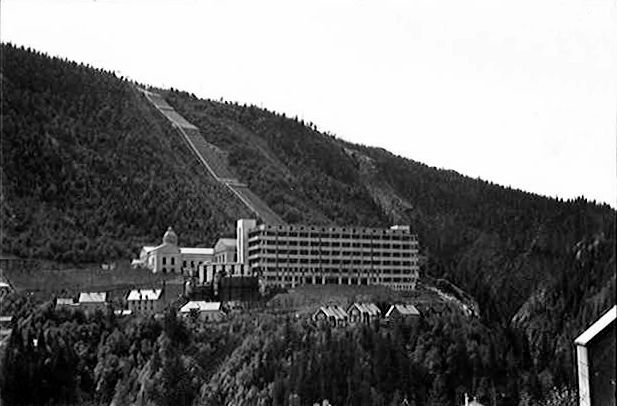Look at a glass of ordinary water. One part in every 4500 of its contents is ‘heavy’ water. Hitler wanted that for his Atomic Bomb project, and he wanted lot’s of it.
In 1934, the Norsk Hydro production plant at Vemork in Norway was the only heavy water production facility in existence. The process was painfully slow, and at that time the plant could only produce around 100 kilos a month. Heavy water is otherwise known as Deuterium oxide.
At the beginning of the Second World War, scientists in both Britain and Germany knew that heavy water could be used in the production of weapons-grade plutonium. The Nazi invasion of Norway in 1940 meant that Norsk Hydro passed into German hands.
Once the plant was controlled by the Nazis, the heavy water it produced was taken straight to Germany where it was used in the Nazi’s nuclear fission development programme.
Scientists in both Britain and America knew that the Nazis now had access to this heavy water, and they considered it essential that the Norwegian production plant should be destroyed. One early attempt failed when the glider crashed killing most of the men. A second plan, involving a group of secretly trained Norwegians was drawn up.
Using only one aerial photograph as a guide, the men had to cross a river in mountainous territory under cover of darkness and navigate safely through a minefield – the planners did not expect them all to survive.
The idea was to break into the Norsk Hydro production hall and plant explosive charges on critical pipelines. The men were not told about the importance of heavy water – they just knew it was vital that they didn’t fail.
The leader of the saboteurs was Joachim Ronneberg, a Norwegian, who received his special training in Cambridge, England. Joachim was responsible for placing charges on the pipework in the plant, and on the night of 27th February 1943 he and his 11 fellow team members broke into the plant, right under the noses of the German guards.
In an action that has been described as deserving the gratitude of humanity, they placed their charges and ran for cover – the fuses had been set for 30 seconds so the team would have just enough time to escape but could shear the explosion and know their plan had worked.
Production at the plant was crippled, and in November of the same year American bombers destroyed the facility..
Joachim Ronneberg, now a sprightly 96-year-old, saw his exploits portrayed in the 1965 film ‘The Heroes of Telemark’. Awarded many honours for bravery, he became Norway’s most decorated man, and there is a statue in tribute to him in Alesund, Norway.
Joachim knew nothing about heavy water or nuclear weapons until the atom bombs were dropped on Nagasaki and Hiroshima in 1945. It was then that he began to understand the true importance of that night-time exploit so long ago.
